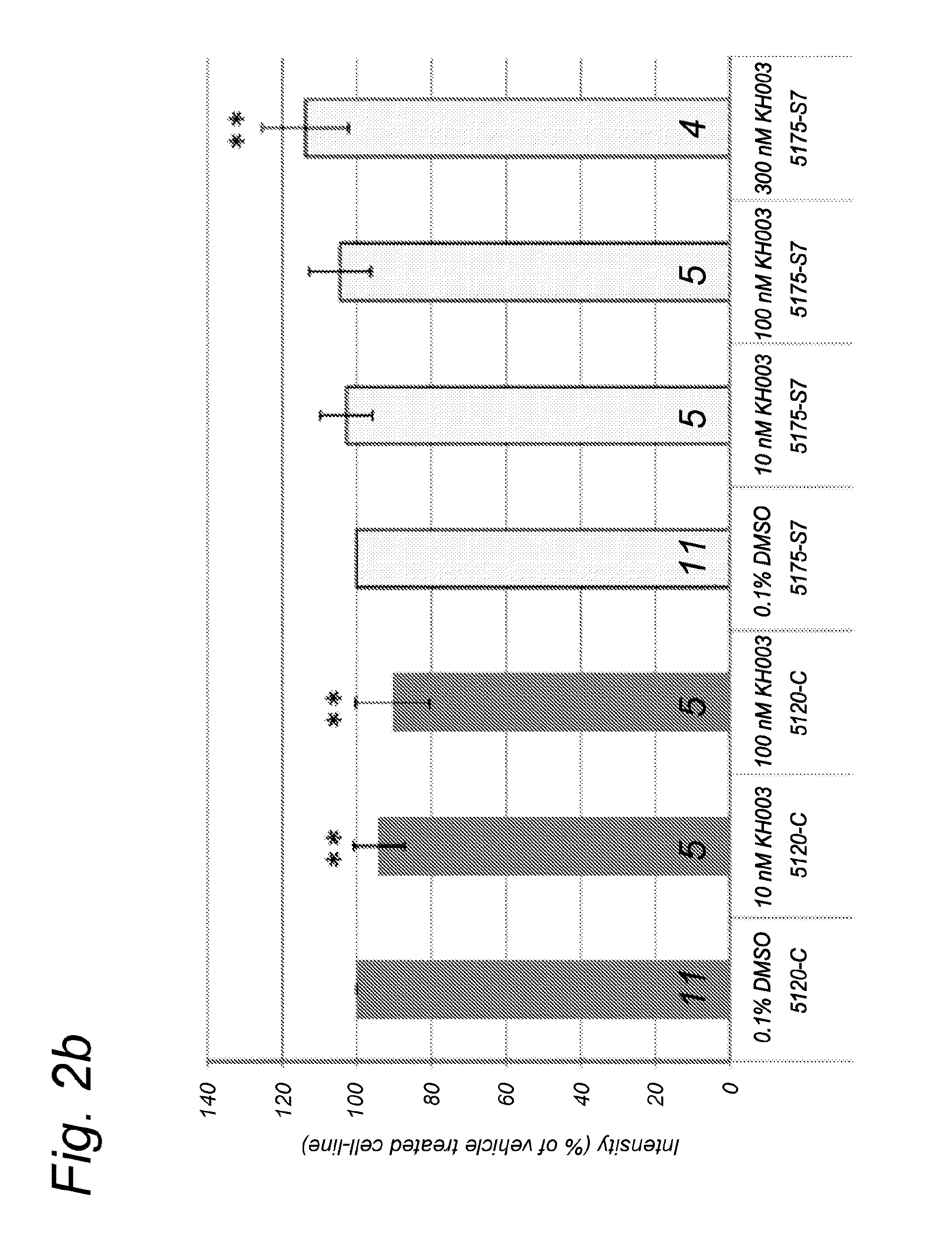Chromanyl derivatives for treating mitochondrial disease
a mitochondrial disease and chromanyl derivative technology, applied in the field of human and animal diseases and cosmetics, can solve the problems of mitochondrial dysfunction, severe metabolic disorders affecting the organs, and no effective treatment is available to cure or improve these disease conditions
- Summary
- Abstract
- Description
- Claims
- Application Information
AI Technical Summary
Benefits of technology
Problems solved by technology
Method used
Image
Examples
example 1
Synthesis of Compounds
1.1 Synthesis of Compounds F, K, N and O
1.1.1 General Information
[0308]Unless noted otherwise, materials were purchased from commercial suppliers and used as received. CH2Cl2 was freshly distilled from calcium hydride. All air and moisture sensitive reactions were carried out under an inert atmosphere of dry nitrogen. Column chromatography was performed using Acros silica gel (0.035-0.070 mm, 6 nm).
1.1.2 Synthesis of Trolox™ 2-guanidinoglycylaminoethylamide trifluoroacetate (Compound F)
[0309]STEP A: To a solution of Trolox™ (1.2 g, 4.65 mmol) in DMF (45 mL) was added HOBt (0.691 g, 5.12 mmol), followed by EDCI (0.981 g, 5.12 mmol). The mixture was stirred until a clear solution was obtained. Next, DIPEA (0.891 mL, 5.12 mmol) was added dropwise. The solution was cooled to 4° C. (ice bath) and Boc-ethylenediamine (0.811 mL, 4.88 mmol) was added. The mixture was stirred at 4° C. for 5 min, allowed to warm to room temperature and stirred for an additional 1 h. The ...
example 2
Effect of Compounds on Protein Expression Levels of Fully Assembled Complex I and Complex II in Healthy and Patient Cells
2.1 Methods and Materials
2.1.1 Isolation of Mitochondria and OXPHOS Complexes
[0360]To determine the effect of the compounds on the Complex I and II levels in normal and patient human skin fibroblasts, cells were treated with compound F(300 compound K (300 μM) or compound N (10 or 100 nM). The patient skin fibroblasts derive from patients with a mutation in different Complex I subunits and the control cells are human skin fibroblasts derived from healthy controls.
[0361]After 72 hours incubation with the compound, the (approx. 2×106) cells were harvested by trypsinization and washed twice with ice-cold phosphate-buffered saline (PBS; Life Technologies, Bleiswijk, Netherlands). Next, the cell suspensions were centrifuged for 5 min; 287×g; 4° C. and the cell pellets were snap-frozen in liquid nitrogen.
[0362]Prior to the isolation of the mitochondria and OXPHOS complex...
example 3
Effect of Compounds on the Increased Levels of CM-H2DCF-Oxidizing Reactive Oxygen Species (ROS) in Patient Cells
3.1 Methods and Materials
[0370]CM-H2DCFDA is a cell-permeable reporter molecule for reactive oxygen species (ROS) that is converted into non-fluorescent and membrane-impermeable CM-H2DCF following removal of its acetate groups by intracellular esterases. Upon oxidation by ROS, CM-H2DCF is converted into fluorescent CM-DCF. It is widely accepted that a wide variety of ROS can be responsible for the CM-H2DCF oxidation, making it a suitable reporter of cellular oxidant levels. The average cellular CM-DCF fluorescence intensity is considered an indirect measure of cellular ROS levels.
[0371]To measure the effect of the compounds on the intracellular ROS levels in different patient human skin fibroblasts, cells were seeded at a density of 1500 cells / well in a 96-well format and incubated with increasing concentrations of compounds F, K and N. Three days after treatment, the cult...
PUM
| Property | Measurement | Unit |
|---|---|---|
| partition coefficient | aaaaa | aaaaa |
| temperature | aaaaa | aaaaa |
| wt % | aaaaa | aaaaa |
Abstract
Description
Claims
Application Information
 Login to View More
Login to View More - R&D
- Intellectual Property
- Life Sciences
- Materials
- Tech Scout
- Unparalleled Data Quality
- Higher Quality Content
- 60% Fewer Hallucinations
Browse by: Latest US Patents, China's latest patents, Technical Efficacy Thesaurus, Application Domain, Technology Topic, Popular Technical Reports.
© 2025 PatSnap. All rights reserved.Legal|Privacy policy|Modern Slavery Act Transparency Statement|Sitemap|About US| Contact US: help@patsnap.com



